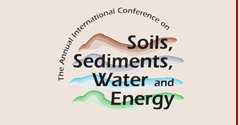Abstract
Using scanning electron microscopy (SEM), the present study evaluated the biodegradation of chicken feathers during a petroleum hydrocarbon removal process by a defined-mixed culture that pose the simultaneous abilities to remove petroleum hydrocarbons and produce keratinases in liquid culture. Biodegradation treatments were performed in Erlenmeyer flasks containing mineral media, 6% w/v of chicken feathers and 64,800 mg l-1 of petroleum hydrocarbons. Flasks were inoculated with the keratinolytic-mixed culture, which was previously obtained from a petroleum-polluted site, and then incubated at 28ºC, 180 rpm during 21 days. Every 7th day, a sample was collected and fractioned; one fraction was processed to be analyzed by SEM while the residual petroleum-hydrocarbons were extracted from the other fraction and quantified by gas chromatography. Controls without inocula were processed under same conditions. The photomicrographs illustrated the different stages of the feathers’ biodegradation; they are first found intact without degradation while the microorganisms from the mixed culture appear only in the supernatants. After the 7th day a remarkable colonization of the feathers begins to be observed, along with a considerable degradation observed after the 14th day of incubation.
Recommended Citation
Cervantes-González, E.; Rojas-Avelizapa, L.I.; Cruz-Camarillo, R.; Rojas-Avelizapa, N.G.; and García-Mena., J
(2010)
"Feather Waste As Petroleum Sorbent: A Study Of Its Structural Biodegradation,"
Proceedings of the Annual International Conference on Soils, Sediments, Water and Energy: Vol. 13, Article 7.
Available at:
https://scholarworks.umass.edu/soilsproceedings/vol13/iss1/7
